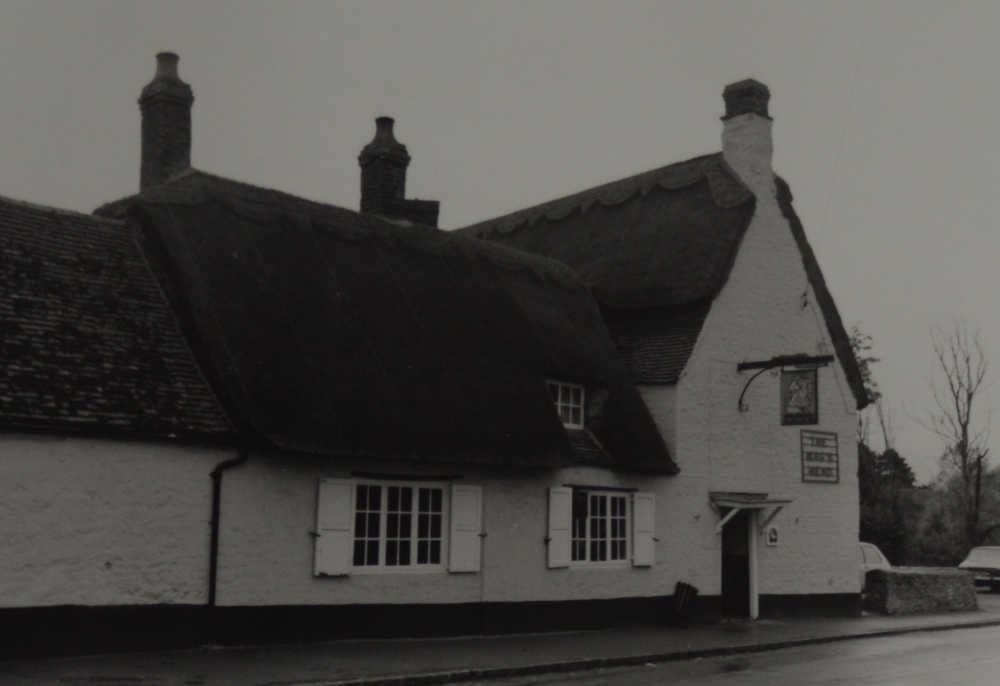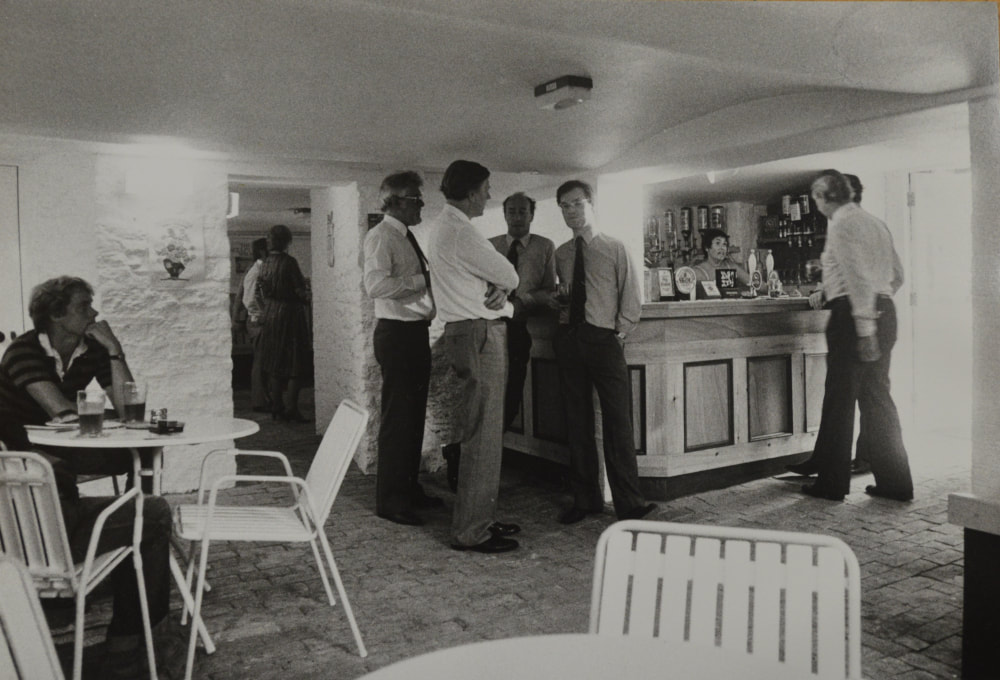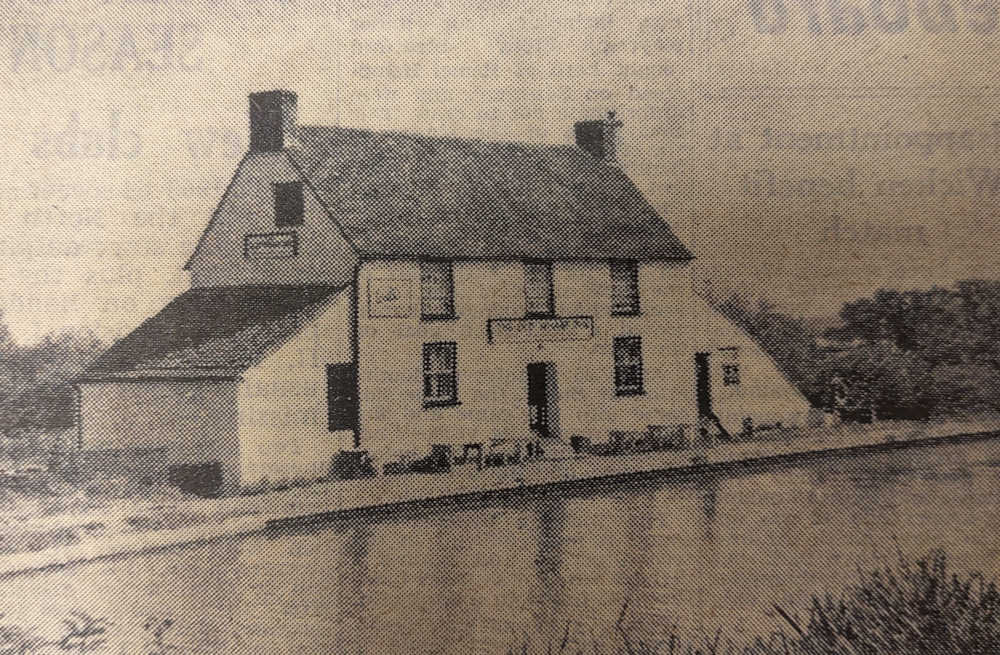Pubs in Great Linford
Great Linford is one of those fortunate places where several long-established pubs have defied the odds and continued to trade for centuries, but there have been other pubs in the village that have called last orders permanently, though exactly how many is matter of conjecture. Pubs can and do change signs, so it is entirely possible that due to the whim of a new landlord, or some other factor, an already established public house changed its name, perhaps more than once. On this page you will find a summary of the pub signs known to have traded in the parish and where further information is available, links to their histories.
The Black Horse Inn
The Black Horse Inn was undoubtedly once known as The Bridge, albeit only briefly, as we find it named as such only once, in 1800. We can theorise that it went by other names before this, perhaps The White Horse and The Six Bells, but there is insufficient evidence to fully support this idea.
The pub does punch above its weight for the most unusual publican to ever pull a pint in the village. Harry Ware was a well-known bantam-weight boxer who in 1902 took over as publican of the Black Horse, installing a fully equipped gym for the training of his fellow pugilists. The Black Horse was also once home to an engineer named Frederick Proctor Malacky, who prior to the arrival of Harry Ware had run a motor-cycle engineering works from the pub. For a time there was also some land connected to the pub such that several landlords had a side-line as dairy farmers, though in 1935, the Parker family were convicted of selling milk insufficient in fat. In 1953, kennels were installed in what is now the carpark of the pub for the Bucks otter hounds, the pack having previously been housed in the grounds of Great Linford Manor Park. They remained at the pub until the early 1970s, when new landlords objected to the noise. Click here to read more about The Black Horse Inn.
The pub does punch above its weight for the most unusual publican to ever pull a pint in the village. Harry Ware was a well-known bantam-weight boxer who in 1902 took over as publican of the Black Horse, installing a fully equipped gym for the training of his fellow pugilists. The Black Horse was also once home to an engineer named Frederick Proctor Malacky, who prior to the arrival of Harry Ware had run a motor-cycle engineering works from the pub. For a time there was also some land connected to the pub such that several landlords had a side-line as dairy farmers, though in 1935, the Parker family were convicted of selling milk insufficient in fat. In 1953, kennels were installed in what is now the carpark of the pub for the Bucks otter hounds, the pack having previously been housed in the grounds of Great Linford Manor Park. They remained at the pub until the early 1970s, when new landlords objected to the noise. Click here to read more about The Black Horse Inn.
The Nags Head
The earliest reference to The Nags Head is found in licensing records beginning in 1792, when a James Hitchen was the landlord. The building itself is thought to be much older, likely late 17th century, though nothing is presently known of its previous usage. We can see also from a tithe map produced in 1840 that the establishment was once much smaller than it is today, with only that part of the building facing directly into the High Street operating as a pub. That part of the pub now used as the restaurant was not knocked through as it is today and was instead divided up into individual dwellings.
The Nags Head was frequently used as a venue for coroner’s juries to convene, with the small outbuilding now overlooking the beer garden used as the village mortuary. One of the most notable landladies in the village was a widow named Sarah Bacchus (1784 to 1865) who ran The Nags Head from 1832 until her death in 1865. For a detailed history of The Nags Head, click here.
The Nags Head was frequently used as a venue for coroner’s juries to convene, with the small outbuilding now overlooking the beer garden used as the village mortuary. One of the most notable landladies in the village was a widow named Sarah Bacchus (1784 to 1865) who ran The Nags Head from 1832 until her death in 1865. For a detailed history of The Nags Head, click here.
The Manor House Basement Bar
Spoken of with much affection by those who remember this tiny basement bar beneath Great Linford Manor House, it appears it was a short-lived enterprise set up at the same time that the Manor House was converted into an Arts Centre by the Milton Keynes Development Corporation. The exact years it was in operation are uncertain but it was established circa the mid 1970s, when the manor house was converted into a short-lived arts centre.
The Pilgrim’s Bottle
No history of pubs in the village would be complete without a mention of The Pilgrim’s Bottle, so named after a titular bottle found at Great Linford during excavations carried out circa 1974-77. Apparently known to locals colloquially as The Broken Bottle, the pub has unfortunately left behind a tainted legacy. Located at St. Ledger’s Court, it opened in the Autumn of 1977 as the new estate of Great Linford was springing up around the old village. It was intended to be part of the burgeoning facilities catering for the influx of new residents, but it seems to have gained something of an unfortunate reputation as it has become inextricably associated with a notorious murderer who had drank at the pub. The nationally reported double murder took place in 2003 and the pub closed in 2005.
The Wharf Inn
As the name tells us, The Wharf Inn, also known as The Linford Inn, was established as part of the large trading wharf established in Great Linford on the banks of the Grand Junction Canal. The pub seems to have been perpetually struggling to break even, or at least this seems to be the implication if the sheer number of publicans that came and went is any indication. At least 33 publicans (men and women) have been identified in the history of the Wharf Inn, from it’s first, Josiah Denny Roote in 1802, to it’s last, W. J. Brockwell, who called last orders for the final time in September 1963. Compare this to the 17 persons identified as publicans at The Nags Head and the 18 at The Black Horse during much the same period, and it does seem as if running The Wharf Inn took a heavy toll on its incumbents. For a detailed history of The Wharf Inn, click here.
The White Horse and The Six Bells
The White Horse is the earliest known pub sign in the parish, dating to at least 1754, but the name may well have been chosen in homage to the establishment of the House of Hanover in 1714, when George I assumed the British throne. The possibility exists that The White Horse was subsequently renamed to The Six Bells, circa 1756, when the then Lord of Great Linford Manor paid to have the five bells of St. Andrew’s church recast, and a sixth bell added. Perhaps the name was changed by a landlord keen to curry favour with his landlord, especially as it is almost certain that the pub was owned by the Uthwatts. For a detailed history of The White Horse and The Six Bells, click here.










